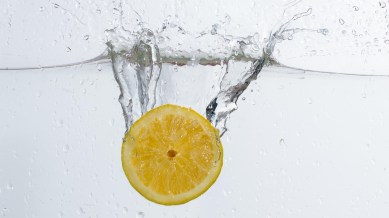Vitamin C for bones? Why you need it with Vitamin D and calcium, can get it with simple diet tricks
The food-first approach works perfectly to meet your targets

Written by Simrat Kathuria
If you have been taking calcium tablets, sunning yourself or opting for vitamin D supplements, then there is one vitamin you are still overlooking — Vitamin C. Although believed to be an immunity booster, Vitamin C is also a key factor in collagen production, bone matrix formation and bone cell protection, all of which are important in ageing. All you need is 75 to 90 mg per day.
How Vitamin C Protects Ageing Bones
With age, the body’s natural collagen production is reduced; this flexible protein scaffolding keeps bones strong from within. Vitamin C counteracts this by increasing collagen production, which is the very basis of the bone structure. It increases calcium absorption so that there is better mineralization of bones. Being a strong antioxidant, it curtails inflammation and oxidative damage. It helps build new bone tissue.
If your intake of vitamin C is low, bones become brittle; if it is moderate, bones are healthy.
How to add Vitamin C in three meals
Daily vitamin C targets can be accomplished through smart pairing and timing rather than through high-end recipes.
Vitamin C is absorbed best when taken on an empty stomach, so breakfast is best. Go for a papaya or kiwi bowl (both with the highest vitamin C content) or a handful of strawberries or one whole orange. Oatmeal with fresh berries and chia seeds, chickpea flour or lentil pancakes with coriander-mint chutney, poha with lemon juice and vegetable upma loaded with capsicum, carrots and fresh curry leaves are other options. Squeeze a lemon on anything — it not only raises the vitamin C intake instantly but also increases iron absorption.
Vitamin C is lost during heating, so keep something raw and colourful on the plate during lunch. Toss in sprouts or chana in a bowl with tomatoes, onions, coriander and lemon. Add fresh cabbage or capsicum to your salads because they’re both rich in vitamin C.
Opt for a quinoa or millet salad mixed with bell peppers, baby spinach, lightly blanched or raw broccoli, and cherry tomatoes. Top it up with a citrus dressing made with either lime or orange juice.
Dinner is best kept simple. I recommend a light vegetable stir-fry with broccoli, beans and bell peppers and a side of cucumber-carrot-capsicum salad drizzled with lemon. You can pair a tomato or mixed vegetable soup (add fresh herbs at the end for extra vitamin C) with wholegrain toast or millet khichdi. Finish with a slice of guava or a few orange segments. Guava is the richest source of vitamin C among Indian fruits. Have it at least thrice a week.
Quick Tips to Maximise Vitamin C for Bone Health
● Don’t overcook the vegetables; lightly steam or sauté them instead.
● Eat the citrus fruits fresh; don’t keep the cut fruits for long.
● Consume iron-rich foods: Vitamin C helps your body absorb plant-based iron better. Spread intake across the day, and your body utilises it more efficiently this way.
● Be consistent: Daily vitamin C is more important than occasional spikes.
(Kathuria is a clinical dietitian)